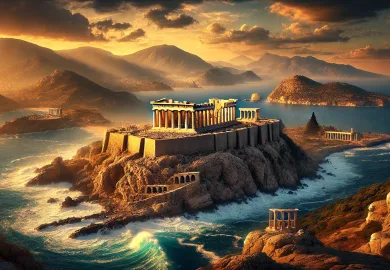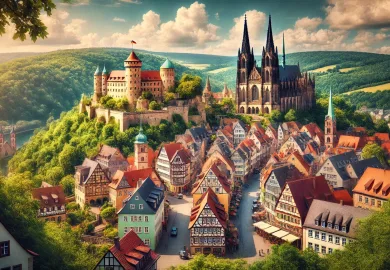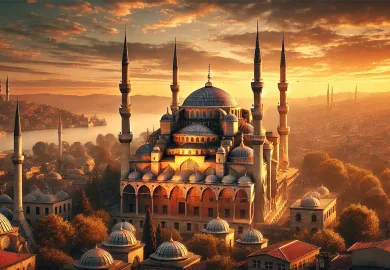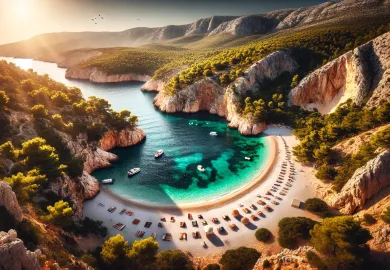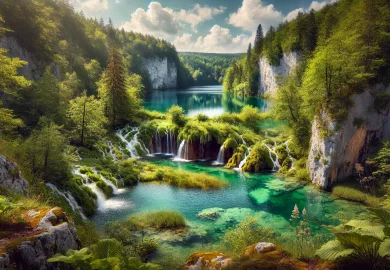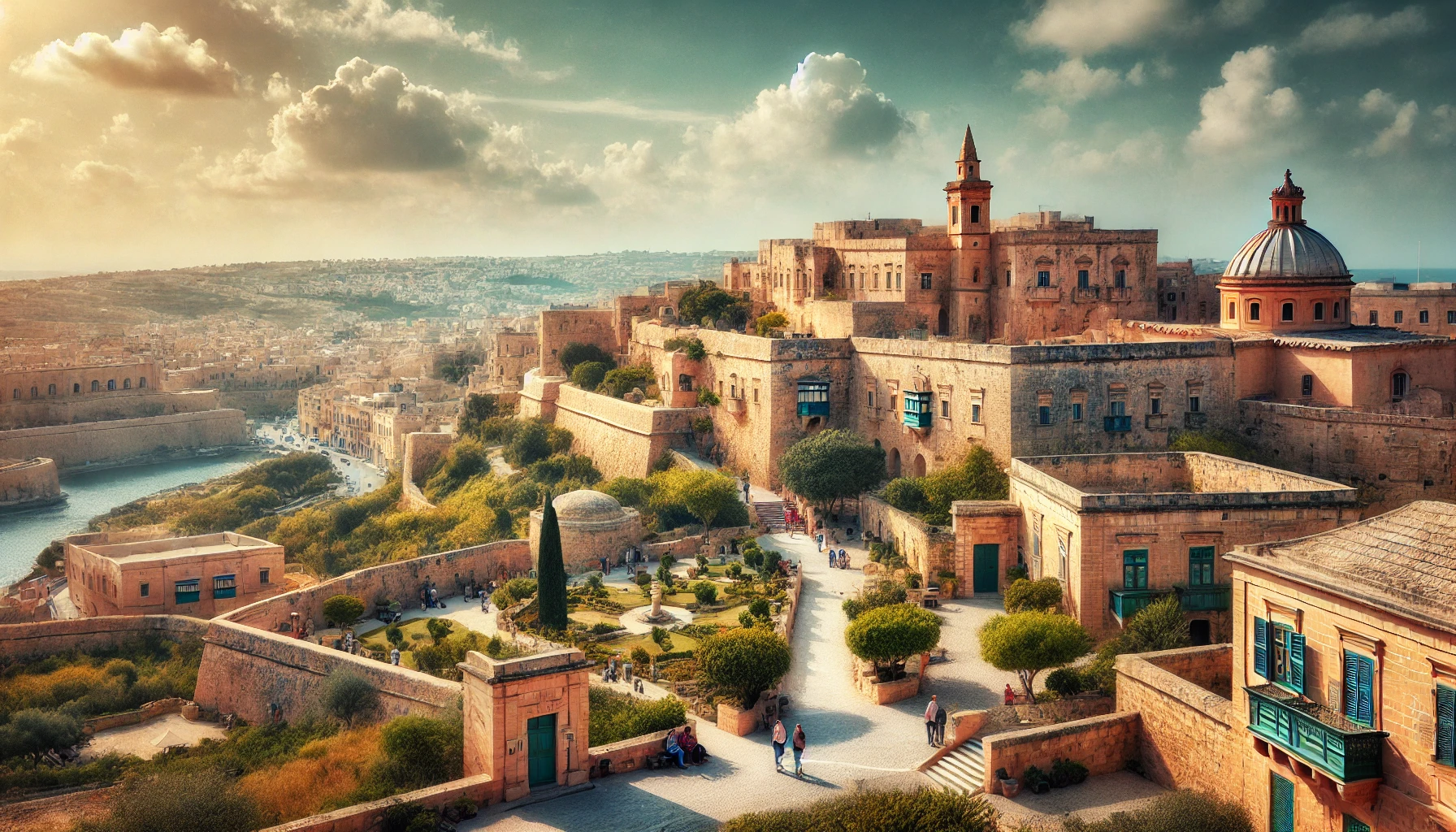
Malta, the Mediterranean jewel, is more than just a stunning island destination with crystal-clear waters. It is a land steeped in rich history, where ancient civilizations have left their mark on every corner. From mysterious prehistoric temples to grand fortifications, Malta’s historical travel gems tell the tale of its unique past. Let’s dive into some of the most remarkable historical sites that this enchanting archipelago has to offer.
Exploring the Megalithic Temples of Malta
The Megalithic Temples of Malta are among the oldest freestanding structures in the world, with some dating back to around 3600 BCE. These UNESCO World Heritage Sites offer a glimpse into the lives of Malta’s prehistoric inhabitants and their impressive architectural skills.
One of the most famous sites is the Ġgantija Temples on the island of Gozo. These massive stone structures are believed to have been used for religious and ceremonial purposes. The name “Ġgantija” comes from the Maltese word “ġgant,” meaning giant, as local legends once thought that giants built these enormous temples. The intricacy and scale of the stone carvings highlight the advanced knowledge of the builders in engineering and design.
Another significant site is the Ħaġar Qim and Mnajdra Temples, located on the southern coast of Malta. Perched on a hilltop with a stunning view of the Mediterranean Sea, these temples provide a dramatic setting for understanding Malta’s ancient past. The alignment of the temples with the solstices and equinoxes is a testament to the early Maltese people’s understanding of astronomy and their connection to the cosmos.
Lastly, the Tarxien Temples, located near Valletta, offer an insight into the more intricate side of prehistoric Maltese culture. This complex is famous for its detailed stone carvings, depicting animals and spiral patterns, which symbolize the artistic abilities of the temple builders. Visiting these temples is like stepping back in time, allowing you to feel the spirit of ancient Malta.
Valletta: A Fortress City with a Glorious Past
Valletta, the capital city of Malta, is more than just the administrative heart of the country; it’s a living museum that reflects centuries of history. Founded by the Order of the Knights of St. John in the 16th century, this fortified city is an architectural masterpiece filled with baroque beauty and military might.
The streets of Valletta are lined with magnificent buildings that speak to its historical significance. The Grandmaster’s Palace, once the residence of the Grand Masters of the Knights of St. John, now serves as the office of the President of Malta and a part of the House of Representatives. The palace is renowned for its opulent halls and lavish tapestries, providing visitors with a glimpse into the knightly heritage of Malta.
St. John’s Co-Cathedral is another must-visit site in Valletta. This cathedral is not just a place of worship; it’s a symbol of Maltese artistry at its finest. Its interior is a marvel of baroque architecture, adorned with gold leaf, intricate carvings, and magnificent artworks, including Caravaggio’s famous painting “The Beheading of Saint John the Baptist.” This piece is considered one of the artist’s masterpieces and is a highlight of the cathedral.
Walking through Valletta is like taking a journey through time, where each narrow alley and grand square tells stories of sieges, conquests, and the resilience of the Maltese people. The entire city is a UNESCO World Heritage Site, recognized for its unique architectural and historical value.
Mdina: The Silent City with a Rich History
The ancient walled city of Mdina, also known as the Silent City, is one of Malta’s most mystical and historic locations. With its narrow streets, elegant palaces, and serene atmosphere, Mdina is a treasure trove of medieval architecture that takes visitors back to a bygone era.
Mdina was the capital of Malta during the medieval period, and its history stretches back over 4,000 years. The city’s name is derived from the Arabic word “medina,” meaning city, highlighting the influence of Arab rule on Malta. Today, Mdina stands as a testament to its multicultural past, blending Roman, Norman, and Arabic architectural styles.
One of the key highlights of Mdina is the St. Paul’s Cathedral, a masterpiece of baroque architecture with a rich interior of frescoes and precious artifacts. According to tradition, this cathedral was built on the site where Saint Paul is believed to have met the Roman governor of Malta in AD 60, after his shipwreck on the island.
Another significant site in Mdina is the Palazzo Falson, one of the oldest medieval buildings in the city. This palace is now a museum that houses an extensive collection of antiques, paintings, and historical objects, providing insight into the lifestyle of Malta’s nobility over the centuries. Exploring Mdina feels like stepping into a historical novel, where every corner and stone whispers tales of the past.
The Three Cities: Vittoriosa, Senglea, and Cospicua
The Three Cities of Vittoriosa (Birgu), Senglea (L-Isla), and Cospicua (Bormla) are often overshadowed by Valletta, but they are equally rich in history and charm. These cities served as the stronghold of the Knights of Malta and played a pivotal role in the Great Siege of 1565.
Vittoriosa, the oldest of the Three Cities, is known for its maritime history and fortified architecture. The Fort St. Angelo is a must-visit, as it was the headquarters of the Knights during the Great Siege. Its strategic location at the heart of the Grand Harbour made it a crucial defense point against invaders. The fort has been beautifully restored, offering visitors panoramic views of the surrounding harbor.
Senglea, also known as the City of the Gard, boasts a rich maritime tradition and is famous for its lookout points, such as the Gardjola Gardens. From here, you can enjoy spectacular views of the Grand Harbour and the fortified walls of Valletta. The iconic guard tower in the gardens symbolizes vigilance and protection, representing Senglea’s role in safeguarding Malta’s shores.
Cospicua, the largest of the Three Cities, is renowned for its double fortifications, known as the Cottonera Lines. This city served as a bastion for the defense of Malta against various invasions. Today, it is a vibrant area filled with history, where visitors can explore its churches, fortresses, and narrow alleys that echo tales of the past. The Three Cities offer a unique experience for travelers seeking to uncover Malta’s deep-rooted history away from the bustling crowds of Valletta.
Malta’s historical travel gems are a testament to its position at the crossroads of civilizations. Each of these sites offers a unique perspective on the island’s rich heritage, making it a must-visit destination for history enthusiasts and curious travelers alike. As you explore these ancient cities, temples, and fortresses, you’ll uncover the layers of Malta’s past that continue to shape its present.


